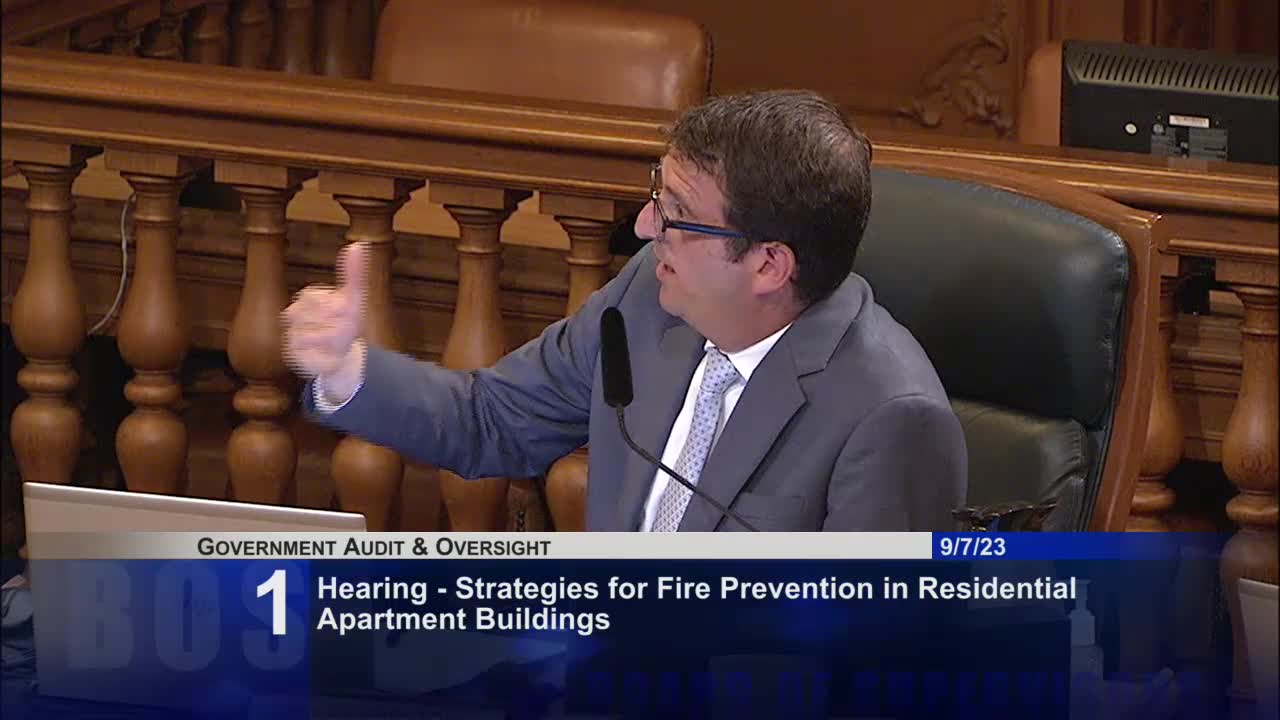San Francisco implements vacancy tax to address uninhabitable buildings post-fire
September 07, 2023 | San Francisco County, California
This article was created by AI summarizing key points discussed. AI makes mistakes, so for full details and context, please refer to the video of the full meeting. Please report any errors so we can fix them. Report an error »

The San Francisco County government meeting on July 4, 2025, focused on the critical issue of building habitability following fire incidents. A significant discussion centered around the timelines and responsibilities for landlords when a property is deemed uninhabitable due to fire damage.
Officials confirmed that the Department of Building Inspection (DBI) issues notices of violation with specific timelines for necessary repairs. Typically, landlords are required to submit an engineer's report within 72 hours and complete the required work within 90 days. However, this timeline can be extended if landlords demonstrate progress in obtaining permits and starting repairs.
Concerns were raised about the reality faced by tenants, particularly those in rent-controlled units. It was noted that some landlords may delay repairs for years, either due to financial constraints or intentions to evict long-term tenants. This situation often leaves tenants in limbo, waiting for their homes to be restored.
A new residential vacancy tax, set to take effect next year, was highlighted as a potential solution to encourage timely repairs. This tax will impose escalating penalties on landlords who leave their properties vacant for more than two years after a fire, with fines reaching up to $20,000 per unit for significant delays.
The meeting underscored the importance of tenant rights and the need for effective enforcement mechanisms to ensure that landlords fulfill their obligations. The introduction of the vacancy tax is seen as a crucial step in holding property owners accountable and expediting the repair process for affected tenants.
Officials confirmed that the Department of Building Inspection (DBI) issues notices of violation with specific timelines for necessary repairs. Typically, landlords are required to submit an engineer's report within 72 hours and complete the required work within 90 days. However, this timeline can be extended if landlords demonstrate progress in obtaining permits and starting repairs.
Concerns were raised about the reality faced by tenants, particularly those in rent-controlled units. It was noted that some landlords may delay repairs for years, either due to financial constraints or intentions to evict long-term tenants. This situation often leaves tenants in limbo, waiting for their homes to be restored.
A new residential vacancy tax, set to take effect next year, was highlighted as a potential solution to encourage timely repairs. This tax will impose escalating penalties on landlords who leave their properties vacant for more than two years after a fire, with fines reaching up to $20,000 per unit for significant delays.
The meeting underscored the importance of tenant rights and the need for effective enforcement mechanisms to ensure that landlords fulfill their obligations. The introduction of the vacancy tax is seen as a crucial step in holding property owners accountable and expediting the repair process for affected tenants.
View the Full Meeting & All Its Details
This article offers just a summary. Unlock complete video, transcripts, and insights as a Founder Member.
✓
Watch full, unedited meeting videos
✓
Search every word spoken in unlimited transcripts
✓
AI summaries & real-time alerts (all government levels)
✓
Permanent access to expanding government content
30-day money-back guarantee

